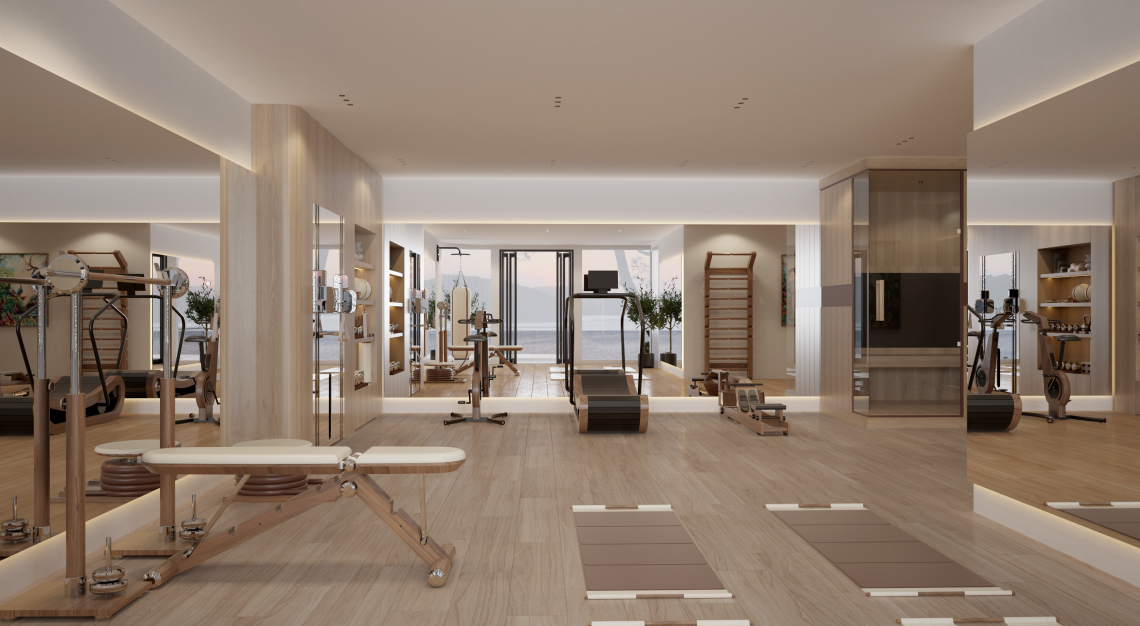Luxury fitness equipment purveyor, Cycling Bears, notes that sustainability is more than a buzzword–it’s a lifestyle that we need to espouse for posterity and ourselves
If there were an award for the most ubiquitous word of the century, “sustainability” would be the clear winner. Across industries, the buzzword has been slapped on countless reports, campaigns, and marketing activations. Marketing ploy or not, any effort to preserve our planet is welcomed in today’s world. As more people embrace a greener lifestyle, various sectors, including fitness and wellness, have recognised the importance of sustainability. At Cycling Bears, however, environmental responsibility has always been embedded in its psyche.
Growing up in Australia, co-founder Debra Tay would eagerly await “hard rubbish collection day,” which occurred twice a year when residents could place large items on the curb for pickup. During these collections, she often saw treadmills, ellipticals, and other bulky equipment—like the electric waist belt fat jigglers from the 1980s—being discarded. “As I grew older, I became increasingly aware of the overflowing landfills and how Australia was shipping its waste overseas, which troubled me. Now, living in Singapore and knowing that our Semakau Landfill is already half full, this concern weighs heavily on my mind,” Tay reflects.
Also recognising the prevalence of “subpar equipment that frequently failed to meet users’ needs,” along with its short lifespan leading to frequent replacements and increased waste, the health and fitness enthusiasts seized the opportunity to launch Cycling Bears.

“Traditional fitness equipment is often made from rubber, plastic, or non-stainless steel metals that corrode, melt, or rust over time, particularly in Singapore’s climate,” the co-founders highlight. “Because these items tend to be priced lower, we might not think twice about discarding them and opting for new replacements. However, these materials are not easily recycled or upcycled.”
And while electronic fitness equipment sees some removable and recyclable parts, most of them are being thrown into our landfills, usually after two to five years when they no longer work. “There is a planned obsolescence in the motor of your treadmill, the screen and the software inside. There will come a point when your supplier will tell you that they can no longer service your treadmill, but you can trade it in for a newer model,” Tay notes.
With concerns about the sustainability of fitness practices, they had their eyes set on redesigning the fitness experience through a greener approach prioritising the well-being of both users and the planet.
Here, Cycling Bears doesn’t just focus on natural materials that last; customisation is also at the forefront of the business. “We believe that personalisation and customisation—ensuring you get only what you need—can significantly reduce your carbon footprint,” explains Tay.

For instance, with PENT, clients can customise the weights they regularly use on the stand. If they only use 4kg, 8kg, and 12kg, they won’t need to purchase the entire 2kg to 20kg set; Cycling Bears can create a customised set just for them. “This not only helps reduce waste but also saves space and money!”
And of course, aesthetics isn’t compromised. An example of this vision is the brand’s recent collaboration with Australian horticulturalist, landscape designer, and television host Jamie Durie, where Cycling Bears was commissioned to design the gym in his new fully self-sustainable home.

“We design aesthetically pleasing products with sustainable luxurious materials that don’t need to be hidden away. By embracing the philosophy of Less is More, we create a luxurious environment that encourages exercise,” Cycling Bears shares. “Unlike traditional fitness equipment suppliers, who prioritise quantity over quality, we focus on understanding users’ needs and providing only what is necessary, enhancing the spaciousness and overall luxury experience.”
With a timeless design that won’t rust or melt and requires minimal maintenance without planned obsolescence, it embodies the essence of the brand’s philosophy: buy only what you need, invest in beauty, and personalise it for yourself, so you truly love it.

Continuing its mission to amalgamate sustainability, wellness, and aesthetics, Cycling Bears also announces that more innovations are on the horizon. One notable example comes from a partner, NOHRD, which has launched products without built-in screens. The brand recognised that the design and resolution of built-in screens could never match the quality of the tablets or smart TVs most users already own. This change not only enhances the user experience but also extends the lifespan of their products by reducing the number of electronic components to maintain.
“We are working with partners, to see how we can customise the equipment for our clients based on their age, fitness level, DNA, and current vitals,” notes Cycling Bears. “Hopefully, we can customise our solution for clients even further this way, so that they can get the maximum impact with the minimum number of equipment!”
Regarding the integration of renewable energy, Cycling Bears notes that current technology does not allow fitness equipment to generate sufficient energy to power other systems. However, its business model focuses on offering equipment that operates without energy consumption and includes self-powered monitoring displays in some of their products. With what’s already available, they believe that nothing is impossible for the future.
“We might have all seen videos of the champion track cyclist powering up a toaster. He could barely sustain the required effort to generate the 700W for two minutes. So while he managed to get his bread toasted, he was completely exhausted after,” shares the co-founders. “We hope we can get there, but for now, we will focus on reducing waste.”






